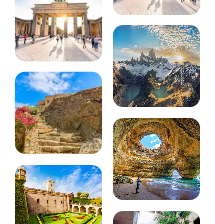The 10 most beautiful walks in the Vercors
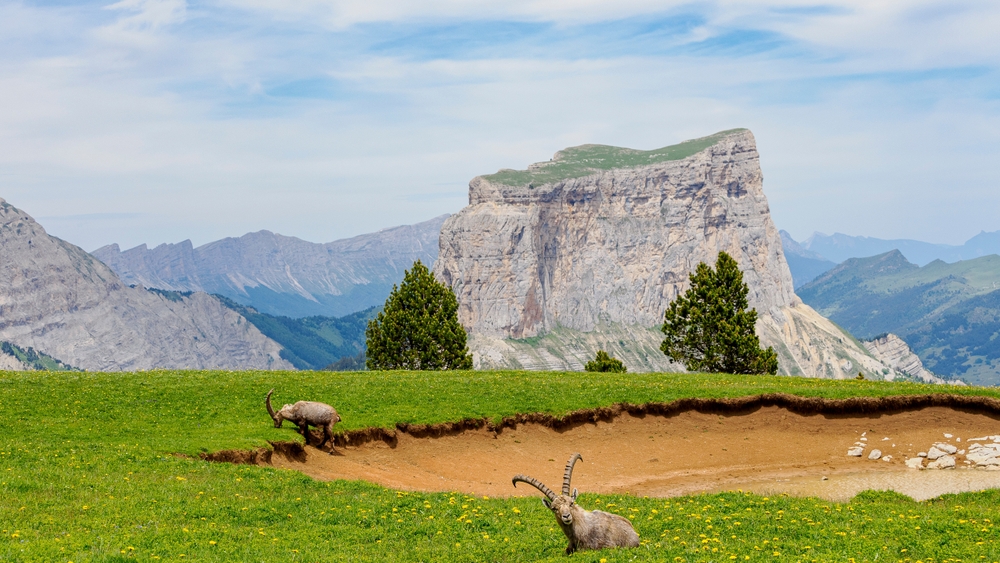
Situated between the Isère and Drôme departments, the Vercors massif offers walkers breathtaking scenery and an exceptional diversity of itineraries. From iconic peaks such as Grand Veymont to secret waterfalls, wild plateaux and grandiose cirques, this unspoilt region is a treasure trove for walkers. Whether you’re a beginner or an experienced hiker, these 10 most beautiful walks in the Vercors promise unforgettable adventures in the heart of one of the most beautiful massifs in the French Pre-Alps.
200 audioguided tours for cities all around the world
DownloadSee also the Grenoble guide :
- Top 10 culinary specialities in Grenoble
- The best hotels to stay in Grenoble
- The most beautiful villages to visit around Grenoble
- The most beautiful villages in the Vercors
1. Le Grand Veymont: the climb to the roof of the Vercors
The highest point in the massif at 2,341 metres, the Grand Veymont is the ultimate goal for any hiker visiting the Vercors. This demanding 19-kilometre hike with a 1,037-metre ascent takes you to the heart of the Hauts-Plateaux Nature Reserve, a wild territory home to ibex, marmots and exceptional alpine flora.
The trail winds its way through magnificent scenery, offering breathtaking views of Mont Aiguille and, on a clear day, Grenoble and the Isère valley. This 5h30 adventure rewards your efforts with a 360° view from the summit, taking in the whole of the French Alps.
Download the audio tour to discover Grenoble on foot and on your own
The capital of the Alps, Grenoble stands majestically facing the Vercors, Belledonne and Chartreuse mountain ranges. Our audio tour of Grenoble invites you to discover this dynamic city, from Place Grenette to the Fort de la Bastille, via its historic districts and secret gardens. Let us guide you on a complete exploration of this Alpine city with a unique character.
2. Touring Mont Aiguille: around a stone giant
Nicknamed “the wonder of the Dauphiné”, Mont Aiguille (2,087m) imposes its unique silhouette on the Vercors landscape. This 17.9-kilometre hike with a 1,148-metre ascent takes in all the facets of this legendary peak, the cradle of modern mountaineering since its first ascent in 1492.
The route leads around this natural fortress via the Col de Papavet and the Col d’Aupet, revealing in turn the impressive faces of this limestone monolith. One viewpoint follows another, each revealing a different perspective on this inaccessible mountain that has fascinated visitors for centuries.
3. The Moucherotte: Grenoble’s lookout point
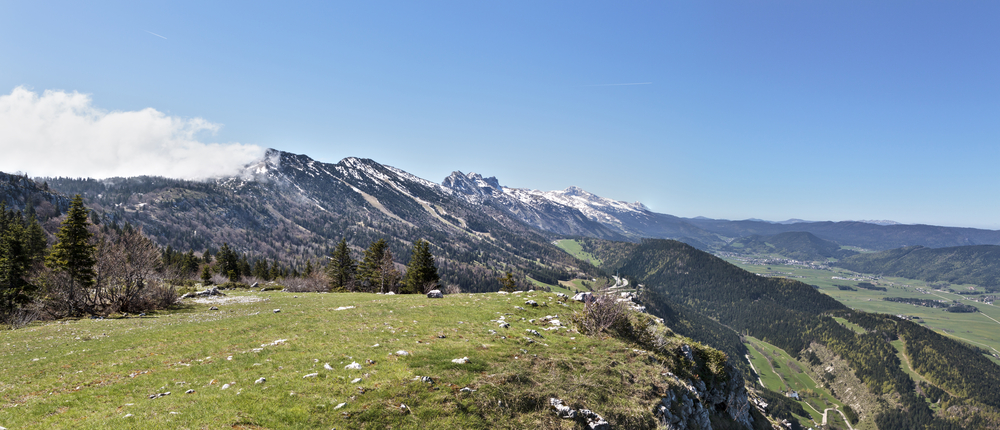
Proudly overlooking the Isère valley at an altitude of 1,901 metres, the Moucherotte offers one of the finest panoramic views in the Vercors. This 10.9-kilometre hike, with a 572-metre ascent, starts from the Lans-en-Vercors plateau and follows the historic Croix des Rames trail.
At the summit, the view embraces not only Grenoble and its valley, but also the Chartreuse and Belledonne massifs. This demanding but accessible climb rewards the effort with grandiose scenery and total immersion in the unique atmosphere of the Vercors.
4. The Pic Saint-Michel: a panoramic ridge
Perched at 1,966 metres on the continuous ridge of the Vercors, the Pic Saint-Michel offers exceptional panoramic views over the two valleys it dominates. This 8.4-kilometre hike with a 565-metre ascent offers a steady but rewarding climb to this iconic peak.
The path, which is mostly exposed to the sun, gradually reveals breathtaking views of the Vercors Regional Nature Park, Grenoble in the distance and the surrounding peaks of the Alps. Be sure to bring plenty of sun protection and water for this climb over open terrain.
5. La Tête Chevalière via the Vallon de Combeau
This cross-border hike, 11.1 kilometres long and 508 metres ascent, takes you from the Drôme to the Isère, perfectly illustrating the geological wealth of the Vercors massif. Starting from the Vallon de Combeau, you can take a gentle approach to the Tête Chevalière (1,951m).
Surrounded by the Montagnette and the Tête de Praorzel, this gradual ascent reveals remarkable panoramic views of Mont Aiguille and the foothills of the Grand Veymont. The route passes through a variety of landscapes, from mountain pastures to rocky areas, bearing witness to the ecological diversity of the Vercors.
6. The Ambel plateau and Tête de la Dame
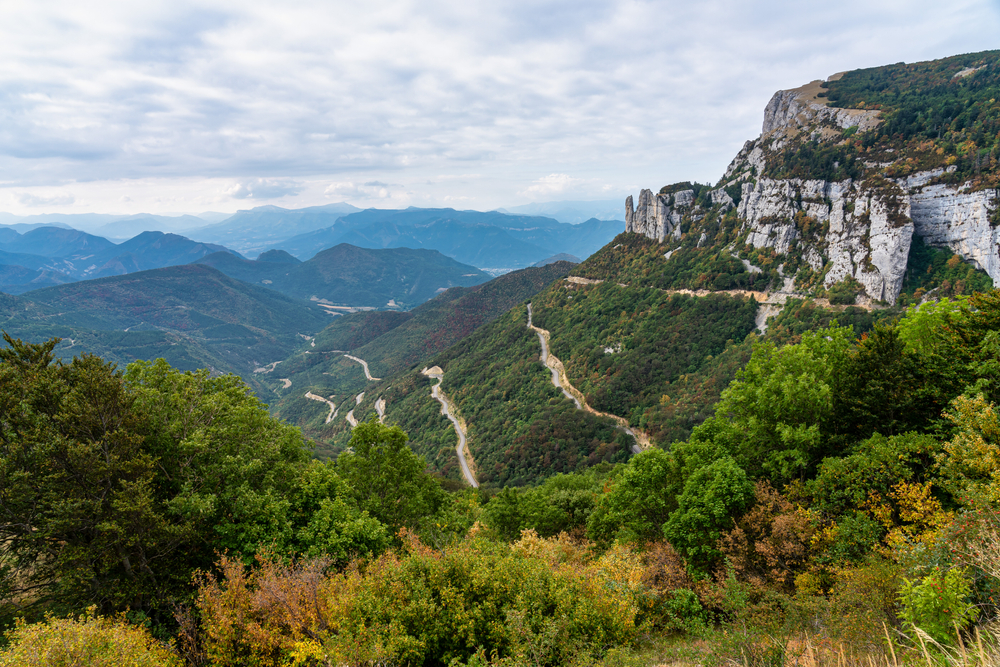
Accessible from the Col de Rousset, this 15-kilometre hike with a 560-metre ascent immerses you in the majestic solitude of the Ambel plateau. This wild territory, bordered by the impressive cliffs of the Vercors, offers a unique hiking experience in an unspoilt setting.
The Tête de la Dame, the highest point on the route, offers spectacular views of the eastern line of the Vercors, dominated by the imposing mass of Glandasse. This area, less frequented than other parts of the massif, is a great place to meet the wild fauna and flora of the Alps.
7. Pas de l’Aiguille and Cirque d’Archiane
This historic hike follows in the footsteps of the French Resistance, as the Pas de l’Aiguille was a major battleground during the Second World War. The route crosses the majestic Cirque d’Archiane, a natural amphitheatre carved out of the limestone of the southern Vercors.
The route gradually reveals the secrets of this grandiose cirque, where the limestone walls rise to a height of several hundred metres. The descent is enhanced by beautiful views of Mont Aiguille, making this a particularly photogenic and emotional hike.
8. The Druise waterfall: an aquatic wonder
Short but spectacular, this 1.4-kilometre walk with a difference in altitude of just 92 metres is one of the most accessible walks in the Vercors. The 72-metre-high cascade de la Druise is one of the most beautiful waterfalls in the massif.
This half-hour family walk begins with an unusual descent before returning to the starting point. Although direct access to the waterfall is now prohibited for safety reasons, the path offers magnificent views of this natural wonder formed by the Gervanne.
9. The Choranche caves and the Gournier waterfall
This exceptional geological hike lets you discover the underground treasures of the Vercors. The medium-difficulty route leads to the famous Grottes de Choranche, a sanctuary of unique stalactites and fistulas, before reaching the Gournier waterfall and its underground lake.
The path gradually reveals the karstic curiosities of the massif: erosion phenomena, resurgences and limestone formations bear witness to the age-old action of water on rock. This educational walk, lasting just a few hours, is perfect for families with a keen interest in geology.
10. From Saint-Nizier-du-Moucherotte to Lans-en-Vercors
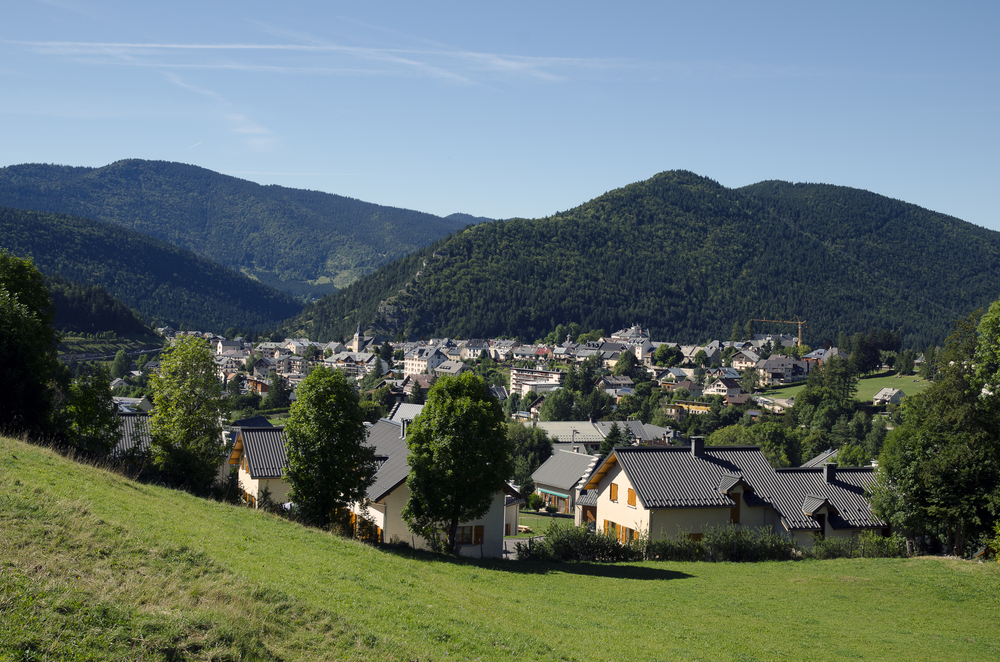
This 5.1-kilometre, 319-metre ascent crosses the heart of the Vercors Regional Nature Park, linking two of the massif’s most emblematic villages. The route takes in old forest tracks and sometimes follows the course of the Furon, the river that shapes the landscape of the northern Vercors.
The historic path, once used by the parish priest of Saint-Nizier-du-Moucherotte to celebrate mass in Engins, passes through some remarkable sites: the Pas de la Corne, the Goulet des Moulins and the Pas du Coeur. This walk through unspoilt countryside offers plenty of opportunities to observe the local wildlife and enjoy the tranquillity of the Vercors undergrowth.
In conclusion, these 10 exceptional walks reveal the full richness of the Vercors massif’s landscapes and the diversity of its ecosystems. From emblematic peaks to secret waterfalls, from wild plateaux to grandiose cirques, each route offers a unique experience in the heart of one of the most beautiful areas of the French Pre-Alps. Whether you choose the demanding ascent of Grand Veymont or the family walk to the Druise waterfall, the Vercors will win you over with its unspoilt beauty and authenticity. Don’t hesitate to discover Grenoble, the natural gateway to these Alpine wonders, to prepare for your adventures in this exceptional massif.
Frequently asked questions
When is the best time to go hiking in the Vercors?
The best period is from May to October, with optimal conditions from June to September. At higher altitudes, snow can persist until May on the high plateaux. Autumn offers superb colours, but the days shorten rapidly.
How difficult is it to start out in the Vercors?
For starters, try the hikes to the Druise waterfall, the Choranche caves or the Saint-Nizier-Lans-en-Vercors trail. These accessible itineraries offer a gentle introduction to the massif before tackling the more demanding peaks.
Where to stay to explore the Vercors?
Grenoble is an ideal base, with plenty of accommodation and easy access to the massif. Villages such as Lans-en-Vercors, Saint-Nizier-du-Moucherotte and Villard-de-Lans also offer accommodation as close as possible to the start of the hikes.
Do I need special equipment to hike in the Vercors?
Standard hiking equipment is all you need: good footwear, weather-appropriate clothing, water and food. For the high peaks, bring warm layers as the temperature drops rapidly with altitude. A map and compass are essential, despite the signposting.
200 audioguided tours for cities all around the world
Download